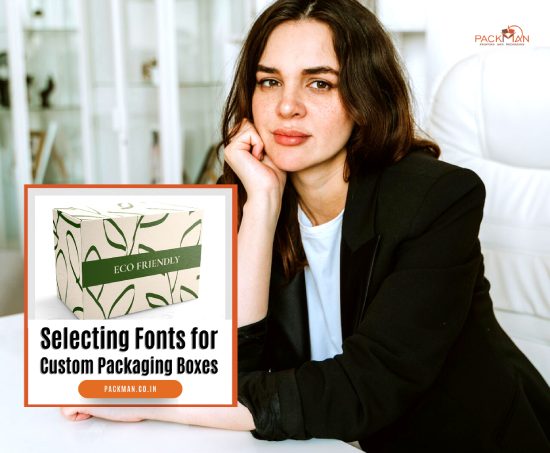When it comes to designing custom boxes, you want to put all your efforts, marketing, and branding materials into them. Your logo perhaps takes the key spot, the centre front of the box, or the centre top, but another essential part of the design is the font. You do not just want a catchy tagline but also for the words to be legible and comprehensible. The typography requires to catch your customers’ eye, and the branding tone and message requires to convert potential customers to loyal ones.
Packman Packaging, India’s top custom packaging designer and manufacturer shares tips to use while you select fonts for your custom packaging boxes.
Type of font
The kind of font you use makes a big difference in your design and the appearance and feel of the packaging. Think about your brand tone and image, is it fun or serious? Fonts also express emotions and ideas. For instance, if your brand image is fun and colorful, it goes sans saying that your packaging design would have plenty of bright colors and patterns. Another inclusion to the design might be to include a serif font or a decorative font. It portrays your brand image as cheerful contrary to if you used a serif font or calligraphy which will make it seem out of place and confuse the buyer. Typefaces usually, come in 4 different types.
A. Serif fonts
These fonts are the oldest form of fonts. The look and feel are classic and serious. One of the best classic examples of a serif font style is Times New Roman. This form of font is best used for newspapers and books, even though there are now several more options to select from when making professional, well-designed visual content.
B. Sans Serif font
‘Sans’ stands for without’. Sans Serif fonts never use the lines at end of the letters as found in serif fonts. One of the most common places where you will see a sans serif font is in advertisements during the 1800s. These fonts certainly portray a more informal tone and feel.
C. Decorative font
This type of script is a diverse class of multiple types of fonts, including, grunge and stencil-type texts. These typefaces lend you more freedom in utilizing them for all sorts of brand tones.
D. Script
Script font resembles handwritten calligraphy, cursive, or other fonts. With this kind of typeface, the feel is warmer and hints at a personal touch provided to the packaging. Cursive handwriting fonts also show elegance and luxury.
Size of font
Do not lose your font in the other elements of your packaging. It needs to be prominent and not overpowering that it takes away all from the other branding elements. Bear in mind a hierarchy of the most vital words, for instance, your brand name, which needs to be the boldest and largest. Following this, the other details, such as hashtag, tagline, and your social media handles, needs to be in a smaller, yet legible font.
Include just what is required
It is quite simple to get overwhelmed with the amount of information you wish to include on your packaging. You want to give your customers as much information as possible for them to know everything with regard to your product and your brand. This could lead you to compromise on other elements like the size and type of font. You look to stand out from your competitors. As much as the right kind of typography and size is critical, so is the amount of information you place on your packaging.
Yes, your customers want to know about your product, but perhaps do not need to know about other similar products through your packaging. You could always use other kinds of marketing to talk about your broader range of products. However, if you have a subscription box business, then including information related to your eco-friendly products or each product included in the box may help attract more customers.





